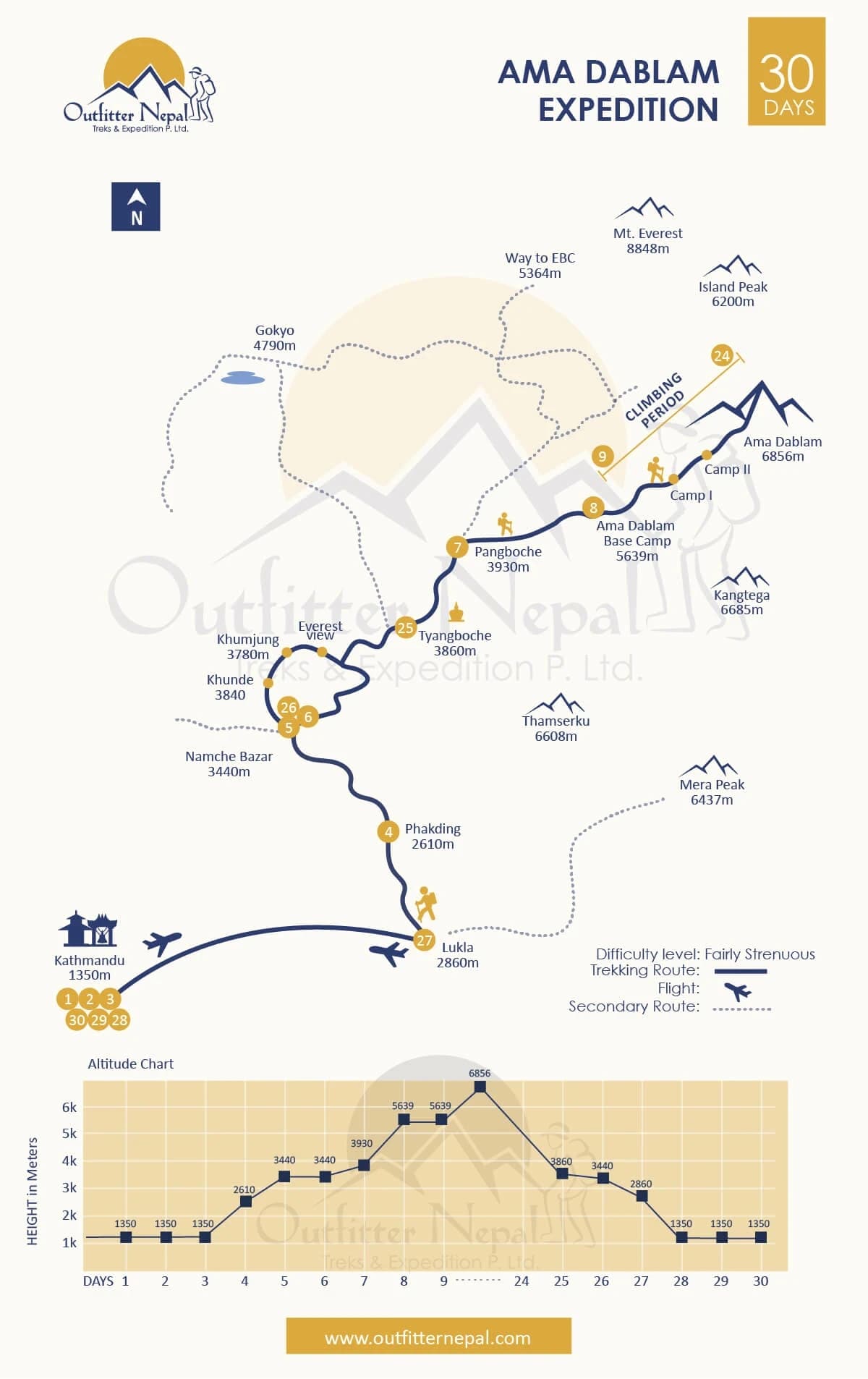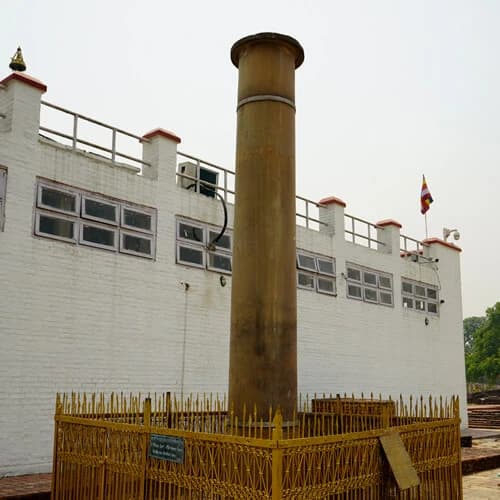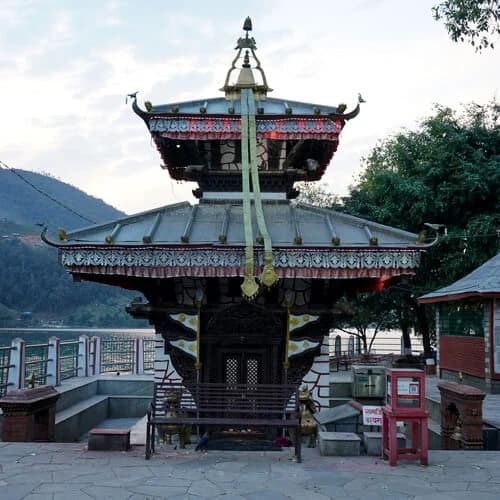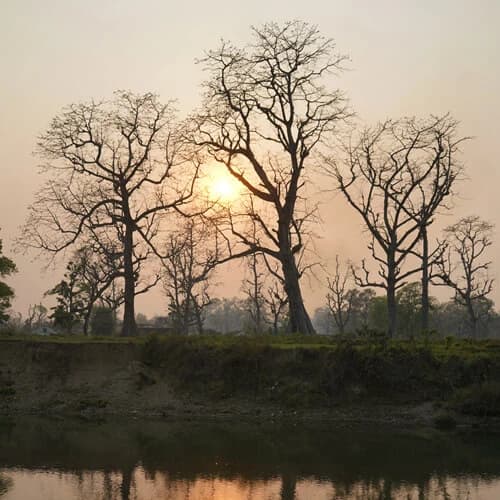Best Features of Ama Dablam Spring Expedition
- Climbing one of the most beautiful mountains in the Himalayas
- 6812 meters high but still a challenging peak to climb
- Enjoying the grand view of Mt. Everest and Mt. Lhotse from the top
- Trekking in the alluring Everest region before and after the summit
- Exposure to the rich Sherpa culture and their bravery in the mountains
- Observing multiple climatic and geological shifts in a single excursion
- Exploring the rare flora and fauna of the Sagarmatha National Park
- Spectacular views of the Rhododendron blanketing the forest in red and pink
Mount Ama Dablam Expedition in Spring Overview
Mt. Ama Dablam is positioned 152 kilometers northeast of Kathmandu in the eastern Himalayan Range. A mountain's lower western summit (6,170/20,243 feet) also exists in the vicinity. Typically, three camps have been set up along the southwest ridge, with Camp 3 located below the hanging glacier (the Dablam). Although it is elevated at an altitude of 6812 meters, Ama Dablam's summit isn't for amateurs. It is a technical climb requiring expertise in mountain climbing.
Ama Dablam means Mother's Jewel in English. Its name is derived from the villagers' perception that a glacier on its southwest side resembles "Dablam," a traditional Sherpa diamond, and "Ama," meaning mother. The Ama Dablam summit has a stunning allure. It draws hundreds of climbers each year not only for its beauty but also for its difficulties. Every climber aims to reach the peak of Ama Dablam once in their mountaineering journey. Ama Dablam is the best option if you have some prior expertise and want to sharpen your mountain climbing skills before going for higher peaks.
Mt. Ama Dablam is lodged south of Mt. Everest and Mt. Lhotse, between some of the highest mountains in the world. You can expect to witness some breathtaking vistas of these giants on your expedition and, of course, much better views from the peak. Tengboche Monastery dominates the Ama Dablam region. It is a must to pay homage to the monastery. Similarly, it is also an excellent opportunity to perform puja or prayer in Nepal. You can observe your Sherpa guides performing the puja before the summit.
Although the summit is just 6812 meters high, Ama Dablam demands a high degree of physical fitness and toughness, making it more difficult than some peaks above 7000 meters. Only those who are skilled at the necessary climbing abilities on rock and ice might ascend Ama Dablam. It is more difficult to climb this summit due to the steep, rough paths with rocks and dense ice. You will need technical climbing tools such as ropes, ice axes, crampons, ice screws, cams, and jumars for this expedition. Make sure you're handy with those.
Join Outfitter Nepal on an exciting expedition to Ama Dablam this spring! We are now taking reservations for our Ama Dablam Spring Expedition for 2024 and 2025. As part of our Spring Expedition, our experienced and knowledgeable Sherpas will guide you to the peak of the challenging Mount Ama Dablam! Our primary focus is your safety, and we have carefully planned the spring itinerary keeping your safety in mind.
The History of The Ama Dablam Expedition
Mt. Ama Dablam was first climbed in 1961. After spending the winter at 5800 meters close to the base of the summit for acclimatization, Mike Gill (New Zealand), Barry Bishop (USA), Mike Ward (UK), and Wally Romanes (New Zealand) successfully ascended Mt Ama Dablam for the first time on 13th March of 1961. They submitted this challenging peak from the Southwest Ridge. Those brave mountaineers were members of the Sir Edmund Hillary-led Silver Hut expedition in 1960–1961, so they were used to high altitudes and had acclimated well.
What Climbing Route is used for the Ama Dablam Expedition in Spring?
We always plan our ascent of Ama Dablam with adequate acclimatization on the route to the expedition base camp. At base camp, our expedition crews stockpile food supplies, equipment needed for climbing, and other necessities. Our attempt to climb the peak will begin from this base station. Up to a certain point, the expedition follows the conventional Everest Base Camp trail. After that, you follow the path that leads to Ama Dablam Mountain.
The Ama Dablam ascent starts up the Southwest Ridge, which is the most popular and safest route. We pass over boulder fields, slabs, cairns, and gullies to reach Camp I at 5700 meters. From Camp I, we follow the eastern edge of the ridge and continue our ascent on slender crests and traverses until we can ascend the western edge. The shortest portion of the most challenging pitch goes to Camp II, a highly constrained region for camping. We keep climbing the slope to reach the difficult eastward traverse. This trail passes to Camp III of our Ama Dablam trek, which is located in the gully between the Grey Tower and other rocky outcroppings.
From Camp III, we begin our summit day for Ama Dablam through the southwest ridge to the summit while navigating numerous clear and substantial crevasses. It is impossible to imagine the happiness and pleasure you will have after climbing Nepal's magnificent Ama Dablam peak. You will be rewarded for your challenging ascent to the peak with an exceptional mountain panorama. The accomplishment of reaching the summit of Ama Dablam cherishes the lifelong memories that you will treasure.
Some of the other routes that take you to Ama Dablam Peak are:
North Ridge: As an alternative to the southwest ridge, this route was first attempted in October 1979. Although choosing this route offers some breathtaking views, it is not advised. This is because there is a high possibility of avalanches, and the snow on the east face tends to be highly unstable.
East Ridge: One of the most challenging paths to reach Ama Dablam is thought to be the easy ridge. This is sometimes referred to as Lagunak Ridge. It wasn't until 1983 that the trail was successfully ascended.
Lower Route: This is situated on the mountain's southern face. After the Southwest Ridge Route, this was the second route to be successfully ascended in April 1979.
How safe is the Ama Dablam Spring Expedition?
Sometimes the ascending stage can be challenging and severe. The elevation of Mount Ama Dablam presents a substantial risk in and of itself. Since high elevations gradually reduce their oxygen supplies, this deadly peak poses a concern. The recovery period after reaching the peak, often known as the acclimatization phase, is the most important part of mountain climbing. So, one should take the acclimatization phase seriously. Mountaineers find climbing up Ama Dablam to be more difficult due to the mountain's rugged topography.
Ama Dablam, however, is the most daring and worthwhile peak to climb for adventurers. The mountain's hazardous terrain, technical obstacles, accessibility issues, unpredictable climate, and avalanches make it highly adventurous and equally dangerous. Every climber should be fully prepared and fit before attempting the ascent of this dangerous mountain peak.
What are the Difficulties of the Ama Dablam Spring Expedition?
The Ama Dablam Expedition has a difficulty rating of TD/5 (Alpine / Grading Fitness link). In simple words, we can say that it is very difficult. In comparison to other summits, Ama Dablam Expedition is an altitude-friendly climb, but it is still a technically difficult and strenuous excursion. The beautiful ridge between Camp I and Camp II features several briefs, steep stretches of the trail as well as nearly vertical ice and rock. Climbing High Camp-I is simple. The trail from High Camp II, however, is primarily made up of steep rocks, snow, ice glaciers, etc. For climbers, this might be challenging but not impossible. Climbers go through a long and steep trek over the glacier of snow and ice to reach the peak, and it demands both strength and skill.
Traveling in the Himalayas means there are also some possibilities of catching altitude sickness. Other unpredictability that climbers must deal with in the Everest region include avalanches and falls. Thus, when Ama Dablam is a shorter ascent, it still poses a high risk.
How to Prepare for the Ama Dablam Expedition in Spring?
Along with practical familiarity and technical skills, you should have the high-altitude experience to attempt to climb Mt. Ama Dablam. Expeditions should budget extra time in the Himalayas to acclimate because Ama Dablam needs enough acclimatization days.
Although the summit itself is rated 5.7, it can feel far more challenging. Some of your climb's cruxes on the ice will provide taxing dangers, so be patient and composed. We advise you to follow safety practices and rope up when necessary, even if some sections of the route may be rather easy in grade.
It is exceedingly difficult to simulate vertical climbing in training like the renowned "Yellow Tower," which you must conquer before ascending Camp II. We strongly advise concentrating on strength, core, and endurance exercises. Any aerobic exercise is to be opted for, including long-distance jogging (10–20 km) three to four times per week, cycling for an hour to two hours, and trekking uphill while wearing 15-20 kg of weight. You should plan your training at least 5–6 months before your climbing trip.
Advanced climbing classes are one example of a helpful course. You will get technical knowledge such as how to abseil effectively, climb with a rope on 5 or 6 anchor points using ascenders, and walk on ice, snow, and rock while wearing crampons.
All prospective climbers should be skilled in the aforementioned mountaineering techniques, be able to support themselves with an ice axe while climbing, and be able to abseil from a height using the route's safety rope. A few accidents happened on this route because the climbers did not correctly tie off the rope at the bottom to the next re-belay when abseiling. After ascending Ama Dablam, the climbers should be prepared for a lengthy descent because this is where the majority of mishaps take place during this expedition.
What is the cost of the Ama Dablam Expedition in Spring?
The Ama Dablam Expedition's price depends on a number of variables. The services that different trekking and mountaineering businesses offer determine the costs they charge. Because there is no middleman commission involved when booking your excursion with a locally-based organization, local enterprises provide a better price range than foreign ones. The size of the group also impacts the cost. If your group is large, there might be group discounts available.
With an emphasis on safety, a successful summit strategy, and first-rate base camp assistance, our team offers premium, all-inclusive services. These services include 1:1 climbing support, local guides who share their knowledge of history and traditions, and a focus on safety. We have chosen an expedition charge that benefits both you and us after careful consideration. The Spring Ama Dablam Expedition's cost at Outfitter Nepal is US$
Why go for Ama Dablam Spring Expedition with Outfitter Nepal?
The success of the Ama Dablam Expedition depends on a well-thought-out schedule and tactical logistics, which we, Outfitter Nepal, are aware of. Through our superior service, we are committed to maintaining the mission's safety and efficacy. To ensure that climbers fully enjoy their climbing experience, our team is committed to being a responsible, moral, and environmentally conscious mountain adventure operator.
We always put a lot of focus on keeping the group size small since it makes it simpler for everyone to coordinate and work together. Your expedition will be led by some of the greatest mountain leaders in the business who have scaled Ama Dablam multiple times. They have extensive education and expertise. Our strategy for climbing mountains is in tune with the years of summit success that our guides, Sherpas, and support team have been providing.





